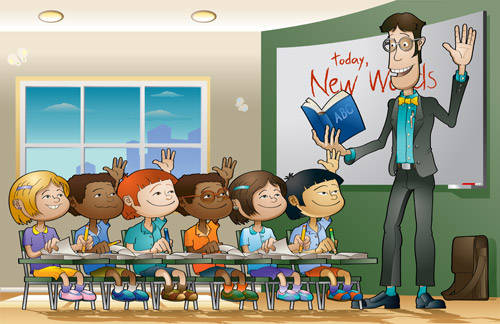5 tips for teachers to start the school year
/With the start of the school year almost upon us it is worth reflecting upon what we do, and how we do it.
These five tips may be of use to both new and experienced teachers to keep in mind facing the challenges of a new group of students with new needs, skills and challenges.
I am sure that you have many pearls of wisdom that may add to these so be sure to add them below.
1: Be enthused
Enthusiasm, and a passion for what you do are infectious. You students will feed off of your energy, and the effort they put in will come back to you in spades.
Speak with vigour and confidence. Have fun with your kids but also make them aware that the classroom is a ‘sacred’ space for teaching and learning, and threatening that environment will not be tolerated.
Take no shame in letting your students know you put a lot of time an effort into your job do because you love it, and expect everyone in the room to respect that. Your students may not love everything you teach, but as long as they put in a genuine effort they should gain your respect in return.
2: Be organised:
You can wing the occasional lesson here and there, but be cautious that in time your students will lose respect for you if you provide them a disorganised learning space and curriculum too often.
You, and your students should know where things are when needed. Your students should expect to be challenged and engaged throughout the day, not just filling time.
Poor organisation can be terminal in building a good teacher student relationship as you can appear incompetent. Furthermore, you may struggle for credibility when your students replicate this poor modelled behaviour.
3: Lay ground rules early:
Without entering the realm of classroom rules and what they might consist of, remember the key is to have something in place. Keep it simple. Be firm, but fair and always make students aware of poor behaviour before acting upon it.
The flip side of this is praising and rewarding those who are modelling positive behaviour. Personally, I am not a fan of tangible rewards, but in certain environments you need to cast a ‘hook’ that will attract good behaviour. It will be different nearly every year.
Rewards tend to work well when they benefit the entire class, but once again everyone’s clientele and circumstances are very different.
4: Consistency
This is the toughest of all in my eyes as life is impossible to get everything right all the time. Furthermore, it is this area your students will constantly remind you about if and when you fail to deliver.
Have a small set of non-negotiable behaviours and actions in your room and try and explain your actions to the group when an incident occurs. Be transparent. Try to never get into a position justifying your actions to a single student one on one. This is dangerous territory.
You may aspire to be your students ‘best friend’ and on many occasions this is a great place to be when the going is good. Never forget your role and responsibility as the caretaker and leader of your students. This doesn’t mean being a dictator, but understand all good teachers are required to be the ‘bad cop’ on occasion.
Balance is key. You don’t want to be known as ‘The Fun Killer’ but students will always try and push the boundaries of teachers that can’t stand up for themselves.
5: Don’t lock yourself away.
This one is simple. Even if you are the greatest teacher in the world it is imperative that you share your successes and failures with others. This can happen inside and outside your school via professional development coaching or a range of other methods depending on what you have available to you.
Get to the staffroom when you can for a cuppa to have a formal and informal discussion about what’s been happening in your classroom.
Don’t forget also sites like this, Pinterest and thousands of others are packed with great ideas from teachers all around the world so be sure to regularly use the web to your and your students advantage.




















